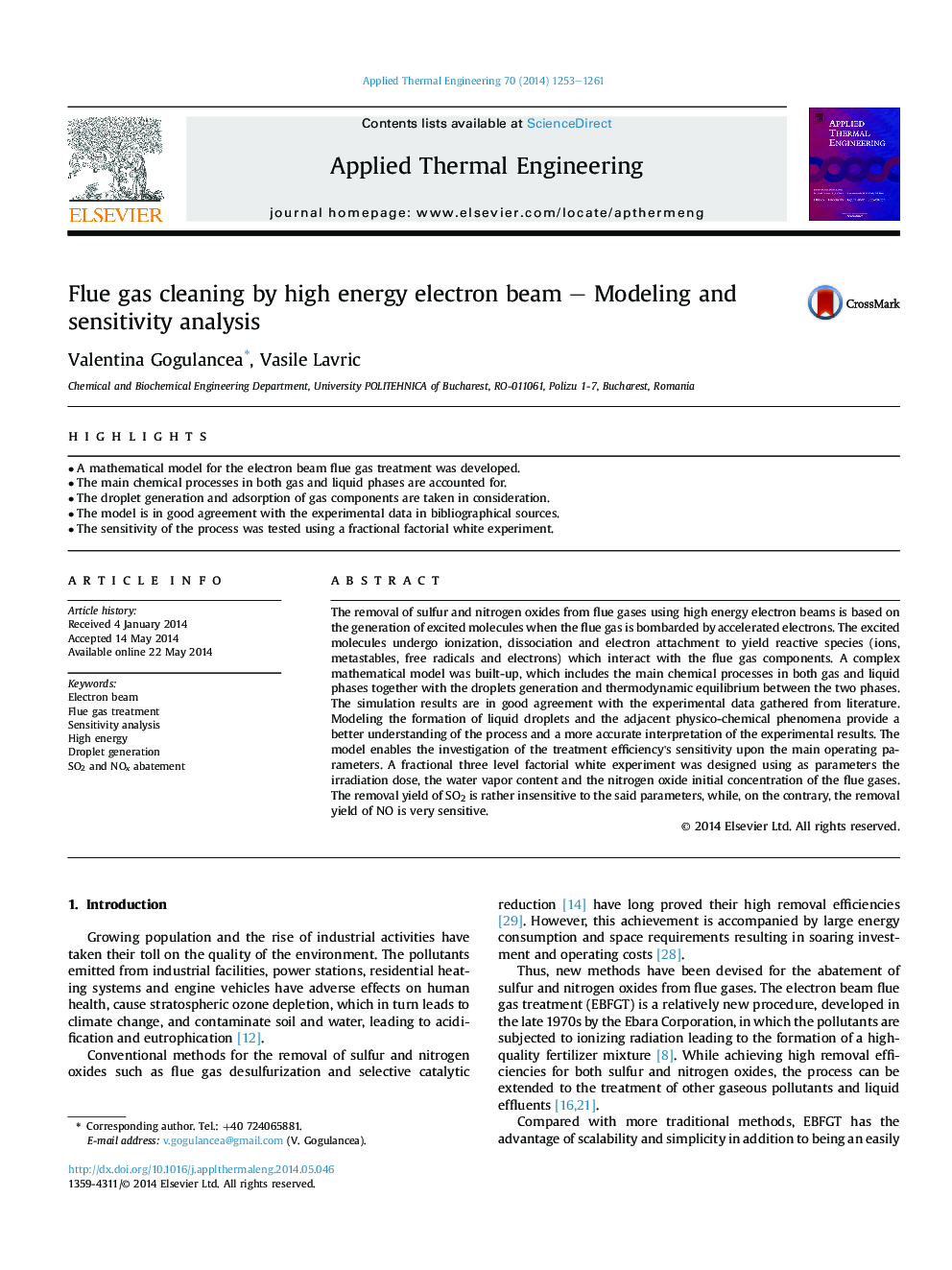| کد مقاله | کد نشریه | سال انتشار | مقاله انگلیسی | نسخه تمام متن |
|---|---|---|---|---|
| 646163 | 1457155 | 2014 | 9 صفحه PDF | دانلود رایگان |
• A mathematical model for the electron beam flue gas treatment was developed.
• The main chemical processes in both gas and liquid phases are accounted for.
• The droplet generation and adsorption of gas components are taken in consideration.
• The model is in good agreement with the experimental data in bibliographical sources.
• The sensitivity of the process was tested using a fractional factorial white experiment.
The removal of sulfur and nitrogen oxides from flue gases using high energy electron beams is based on the generation of excited molecules when the flue gas is bombarded by accelerated electrons. The excited molecules undergo ionization, dissociation and electron attachment to yield reactive species (ions, metastables, free radicals and electrons) which interact with the flue gas components. A complex mathematical model was built-up, which includes the main chemical processes in both gas and liquid phases together with the droplets generation and thermodynamic equilibrium between the two phases. The simulation results are in good agreement with the experimental data gathered from literature. Modeling the formation of liquid droplets and the adjacent physico-chemical phenomena provide a better understanding of the process and a more accurate interpretation of the experimental results. The model enables the investigation of the treatment efficiency's sensitivity upon the main operating parameters. A fractional three level factorial white experiment was designed using as parameters the irradiation dose, the water vapor content and the nitrogen oxide initial concentration of the flue gases. The removal yield of SO2 is rather insensitive to the said parameters, while, on the contrary, the removal yield of NO is very sensitive.
Journal: Applied Thermal Engineering - Volume 70, Issue 2, 22 September 2014, Pages 1253–1261
